Postural Restoration® is a discipline of physical therapy that focuses on correcting natural postural imbalances, or asymmetries, in the body. Postural restoration physical therapy explores the methods we can use to bring balance back, or realign muscle patterns to improve overall body alignment to help reduce pain, improve range of motion, and facilitate more functional patterns of movement.
The Postural Restoration Institute (PRI) was founded in 1999 by therapist Ron Hruska to develop the science of postural adaptations, understand common compensatory strategies for muscular asymmetries, and determine how the body’s various muscle chains impact muscle strengthening and conditioning that can lead to dysfunction and pain.
What is Postural Restoration® (PRI)?
Postural Restoration Physical Therapy focuses on correcting imbalances in the body related to posture, body composition, and movement patterns. It focuses treatment on the often naturally imbalanced body’s alignment and compensatory movement patterns which can create pain and movement dysfunction over time.
Postural restoration physical therapy uses specific exercises and manual techniques to address imbalances and asymmetries in the body’s structure and movement patterns, helping bring systems back into alignment to help the body move more functionally and with less pain.
Common techniques used in postural restoration physical therapy include: muscle energy techniques, myofascial release, and postural and gait improvement exercises, as well as others to improve and enhance entrenched movement patterns.
The Postural Restoration Institute® is an educational resource for physical therapists to explore the inherent asymmetries in the body that can lead to discomfort, dysfunction, and movement restriction. Research and practice-based, the Postural Restoration Institute helps physical therapists identify common patterns of muscular, mechanical, and sensory dysfunction. Postural Restoration Certified™ (PRC) therapists understand the most effective methods to help patients realign their chains of muscles and patterns of overuse to reduce chronic pain and expand functional range of motion.
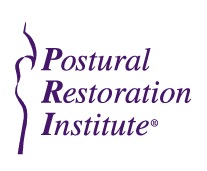
Common complaints that can be addressed by accepted PRI treatments include back and knee pain, lateral pelvic tilt, flat or high foot arches, shoulder imbalances, arthritis and osteoarthritis, headaches, and chronic pain, among others.
The Human Body Is Not Symmetrical
Our brain, lungs, muscles, and tissues are not the same on both sides of the body, which means these organs and systems both occupy different positions from right to left. As a result, our muscle systems have different responsibilities and functions placed upon them by their specific real estate in the body.
Consequently, most people have a dominant side — typically the right. Because our bodies often favor one side over the other, this bodily asymmetry can manifest as:
- Shoulder imbalances,
- Leg length differences,
- Tightness in one hip or a lateral pelvic tilt,
- More difficulty in balancing on one side,
- Flatter or higher foot arch on one side,
- Over or under developed muscles on one side,
- And others.
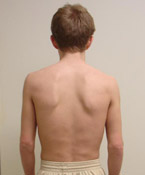
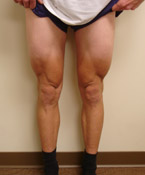
As one side emerges as dominant and strengthens, the compensation strategies our bodies develop create a new sense of ‘normal’ as we move through our lives. Over time, specific muscle groups can become used to shouldering an undue burden, strengthening and tightening in uneven planes of motion, while others weaken or create laxity as they’re underutilized.
This process can result in pain and discomfort, as well as inflammation, arthritis, chronic pain, or overuse injury.
Movement Patterns & Muscle Chains
The body is an interconnected machine that relies on chains of muscle groups working in concert to complete basic functions. For example: to walk a few steps, our brains have to engage in balancing one side of the body while one leg reaches forward and one arm swings backward, and all the related muscle groups must tighten and relax at the appropriate time to prevent tripping or falling.
This happens because everything sensed from the bottom of our feet all the way up the chain to the position of our necks and jaws must be activated in a way that facilitates forward movement with a level head.
These muscle chains also have an impact on how we breathe, from how much each lung is allowed to inflate, to how much we are able to exhale in one breath and on one foot. Because we typically favor our right sides, common patterns emerge based around that bias, each of which can create its own problems for the body as a whole, affecting different areas on both sides:
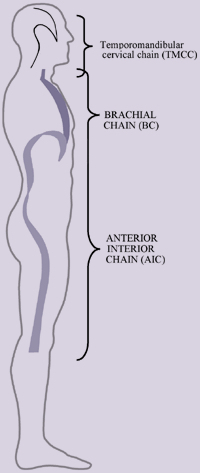
The Left AIC Pattern
The anterior interior chain of muscles, or AIC, is made up of the muscles connecting your diaphragm, the psoas muscle, the muscles connecting your lower ribs, among others, to form a chain of muscles that directs the functional rotation of the body’s trunk, ribs, lower spine, and lower extremities.
This muscle chain works in concert to stabilize the body through movement, providing the balance, flexion, and rotation that allows us to stand and breathe properly on that side while we go about our daily lives.
Issues that can result from imbalances in the Left AIC pattern can include:
- Ankle instability or repeated strains
- Plantar fasciitis
- Bunions
- Hip pain, impingement, and strain
- Sacroiliac (SI) joint pain
- Piriformis syndrome
- Sciatica
- Lumbar Disc compression, Stenosis
- Among others
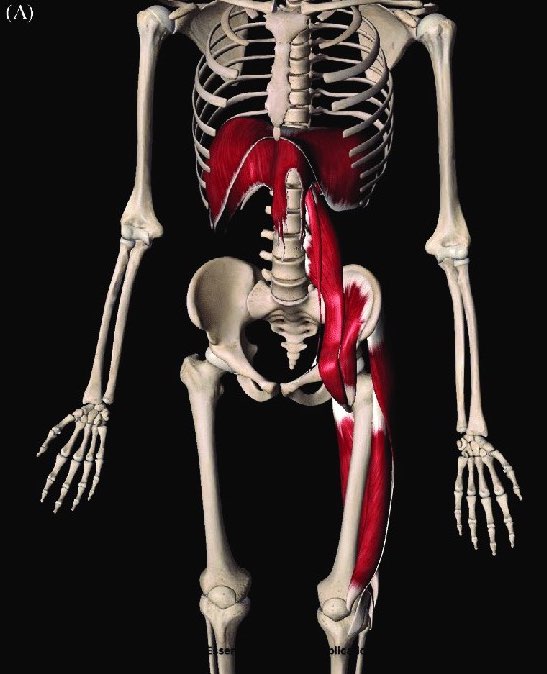
The Right BC Pattern
The Right BC Pattern, or Brachial Chain, is composed of the muscles from your chest, shoulders, neck, and ribs and are used to facilitate lung expansion or breathing, chest and trunk rotation, as well as stability to balance the trunk over the standing leg while we level our head for any movement.
Issues that can result from imbalances in the Right BC pattern include:
- Respiratory dysfunctions like asthma
- Neck and shoulder pain
- Tendonitis
- Chest or rib pain
- Headache
- Anxiety
- Difficulty sleeping
- Upper back pain
- Numbness in the arms and hands
- Thoracic outlet syndrome
- Acid Reflux/GERD
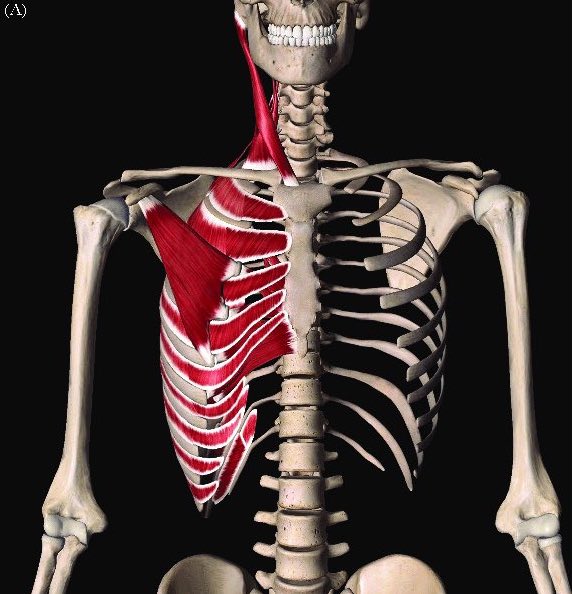
The Right TMCC Pattern
The Right TMCC Pattern, or Temporomandibular Cervical Chain, is the group of muscles that are responsible for directing and supporting your head and neck, and involve the muscles surrounding your head, jaw, neck, and upper scapula. This group of muscles responds to the alternation of the body below the head to ensure that the head and eyes remain level during movement for balance and breathing.
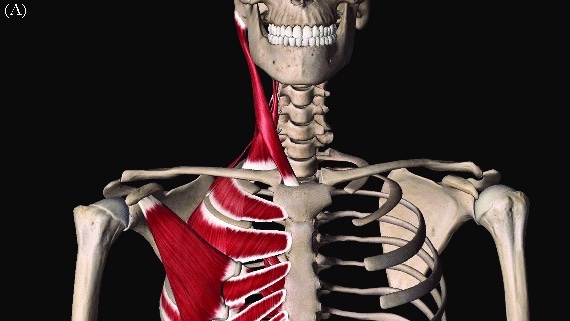
Issues that can result from imbalances in the Right TMCC Pattern include:
- TMJ disorders like lockjaw, jaw pain, or difficulty chewing
- Neck pain
- Dental issues like dental malocclusion and open or cross bites, as well as crowded teeth
- High blood pressure, POTS (Postural Orthostatic Tachycardia Syndrome), uneven heart rate and other autonomic imbalances
- Headache, fatigue, and other endocrine system-related symptoms
- Anxiety, depression, ADHD, heightened sympathetic nervous states
The Brain vs. The Body
The focus of PRI is to retrain the brain to sense and facilitate the body to move with muscle groups that work well together instead of in-opposition to one another. This includes not only helping joints, muscles, and tissue move in a way that’s less dysfunctional and more efficient, but also includes helping muscles that have been overused compensators to actually let go, and let other, more appropriate muscles take over their share of the work.
This process combines what the brain senses with what is needed for the body to move properly to help gradually overcome asymmetrical compensation patterns so you can transition to more functional patterns of movement.
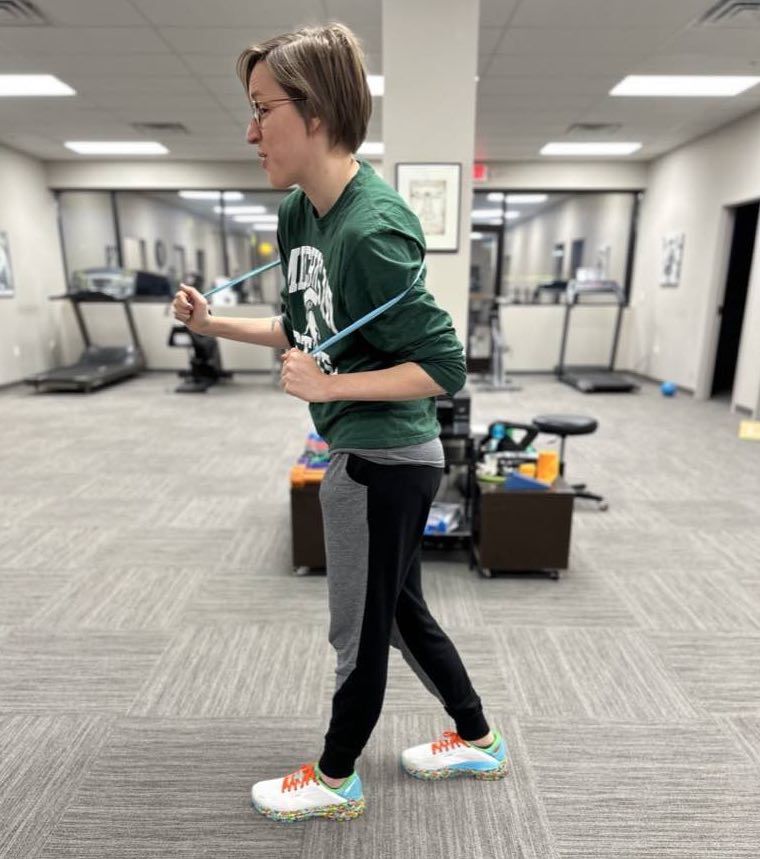
How Can Postural Restoration® (PRI) Physical Therapy Help You?
Types of chronic pain, from back or neck pain to headaches and even arthritis can be rooted in asymmetrical movement patterns. What PRI physical therapy does is help treat and overcome entrenched postural patterns that are the cause, rather than the symptom, of dysfunctional movement and the chronic pain that can be associated with it.
PRI certified therapists can identify a patient’s unique individual asymmetry or imbalance using techniques like postural and gait analysis, breathing strategy assessments, functional tests for balanced movement and positional sense, and others. Once the cause is determined, a plan can be made to begin correcting positional sense and adjusting compensation habits to facilitate healthier forms of movement, reduced pain, increased endurance, and greater range of motion.
If you’ve dealt with chronic pain or struggled to find a solution that addresses your specific symptoms, Postural Restoration may be your answer to help you find the cause, and start creating the change you need to enhance your quality of life.
Interested in Postural Restoration® Physical Therapy?
Click below to call us or schedule your initial consultation.
Postural Restoration Institute® (PRI) Techniques
Trained Postural Restoration physical therapists use techniques from the Postural Restoration Institute® to help retrain muscles and neuro-muscular systems to achieve more balance between the two sides of the body. This allows the body to properly alternate and support our posture as a system that coordinates balance with breath rather than the taxing job of holding us upright and trying to move at the same time. PRI techniques seek to not only correct issues that are rooted in bodily asymmetries, like lateral pelvic tilt or unbalanced shoulders, but also reestablish patterns of functional movement that prevent regression back to the old, dysfunctional patterns of compensation.
PRI utilizes both manual and non-manual techniques (exercises) to bring about a more harmonious balance. Over 600 non-manual techniques can be used to address hip and shoulder imbalance, breathing issues, walking and gait issues, and vestibular and balance control. Manual techniques integrate hands-on methods to create more functional movement around the Left AIC Pattern, the Right BC Pattern, and the Right TMCC Pattern that exercise alone may not gain.
In contrast to many traditional physical therapy modalities, PRI focuses on a holistic approach to the body — isolating and treating root causes for pain and overuse syndromes. Symptom based approaches can often alleviate pain but must be repeated. A PRI approach to treating dysfunction can restore function and alleviate symptoms with a lasting result.
Breathing and respiratory function are also key focus points of PRI that set it apart from other forms of physical therapy. In many cases, we stand in our own way of progress, and what needs to get out of the way – is air! Once we are taught how to properly move air out and then find new spaces to put it back in, new movement possibilities emerge and old goals may finally be attained. PRI recognizes the importance these systems play in the body as a whole and its healthy, functional movement from head to toe.
Breathing Exercises
Breathing plays a critical role in our well being, and it’s often revelatory to realize many of us don’t, or can’t, breathe in a fully functional way. PRI can help facilitate the retraining of diaphragm muscles, lung expansion and perfusion, by training us to use proper breathing techniques that allow both lungs to fully inflate and be utilized to their full potential.
These strategies also work to help compensatory muscle systems take a back seat, while the most functional patterns of movement can be retrained to maintain functional breathing.
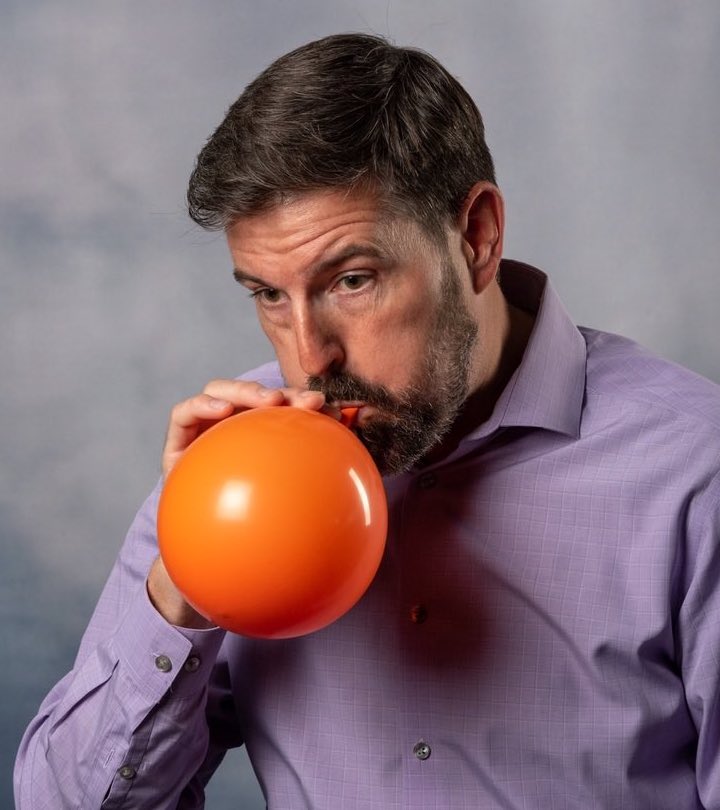
Retraining Exercises
Additionally, a large component of PRI technique focuses on helping the body retrain itself away from asymmetrical patterns of movement. Our bodies like to take the path of least resistance. When we strengthen this, we strengthen our compensation pattern but not our correction. After years and years of dysfunction, that pattern may be in the way of healthy movement.
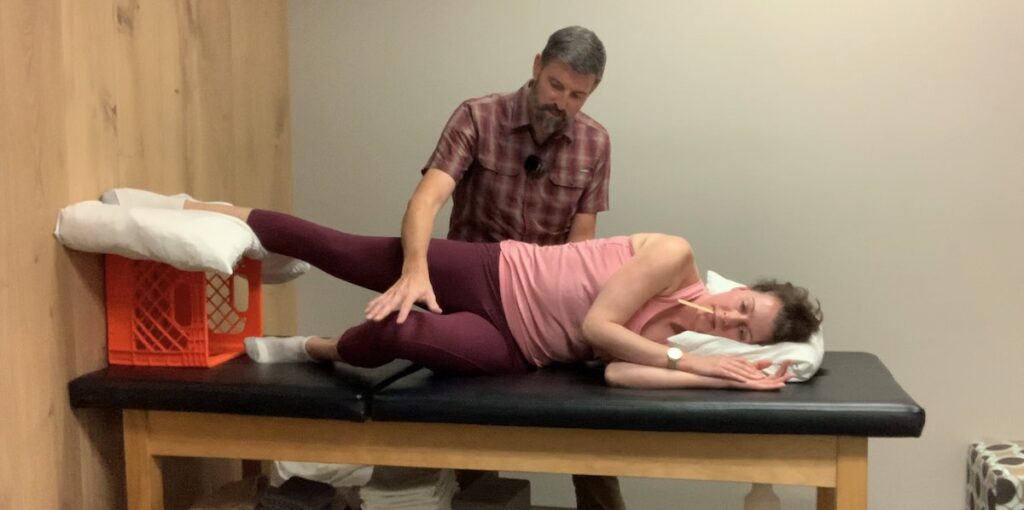
With the right PRI support, however, we can work to retrain muscle systems with pattern correction so that eventually the functional path becomes the path of least resistance again. By correcting patterns of movement and breathing that cause dysfunction or pain, the result can be immediate, but must also generally be practiced over time for the results to last.
Shoes/Orthotics
When evaluating patients, PRI providers include posture, ground sense, and functional gait testing to identify the cause of postural shifts and patterns from your head to your shoes. Because so many of us have a dominant side, this can impact how we walk and run. Single-side dominance will often cause us to bear weight and wear our feet into our shoes unevenly. In some cases, this can cause arches to rise or flatten and impact our body position and range of motion. Over time, this can lead to observed leg length differences, lateral pelvic tilt and other postural overuse patterns. Asymmetries can also cause disruptions in our ground sense, which in turn can alter our sense of balance and feedback from our vestibular systems.
Proper footwear and orthotics can be used to address these kinds of movement restrictions to help the body on its way to more functional movement patterns. These tools are generally used in concert with other PRI techniques to help establish a foundation for more functional movement.
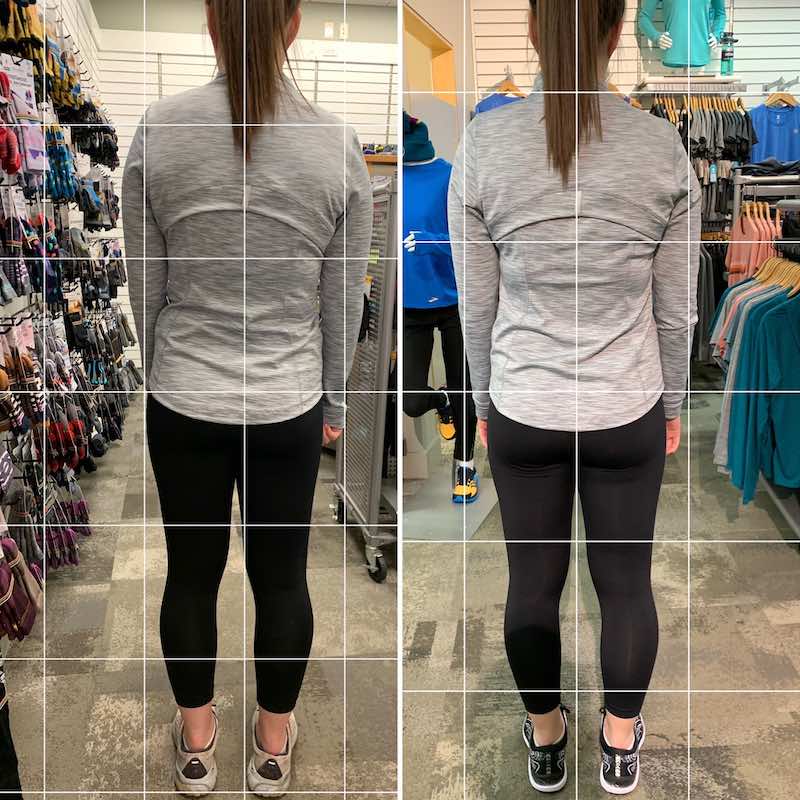
Dental/Occlusal Appliances
Many issues related to your jaw and mouth can be assisted through PRI. Some of the more common problems treatable through PRI are TMJ, bite issues, snoring, and sleep apnea. While these are often treatable with PRI, it’s also important to work with your dentist, which is why we happily collaborate with dental professionals to help meet your specific needs.
In some cases, a customized dental occlusion device can help realign the jaw, bite, and reduce tension throughout the body that develops when your teeth and jaws can not find normal muscle balance together. These devices are used in combination with a PRI therapy program that is designed to inhibit the old pattern of restriction and overcome limits that you didn’t even know originated with your head and neck.
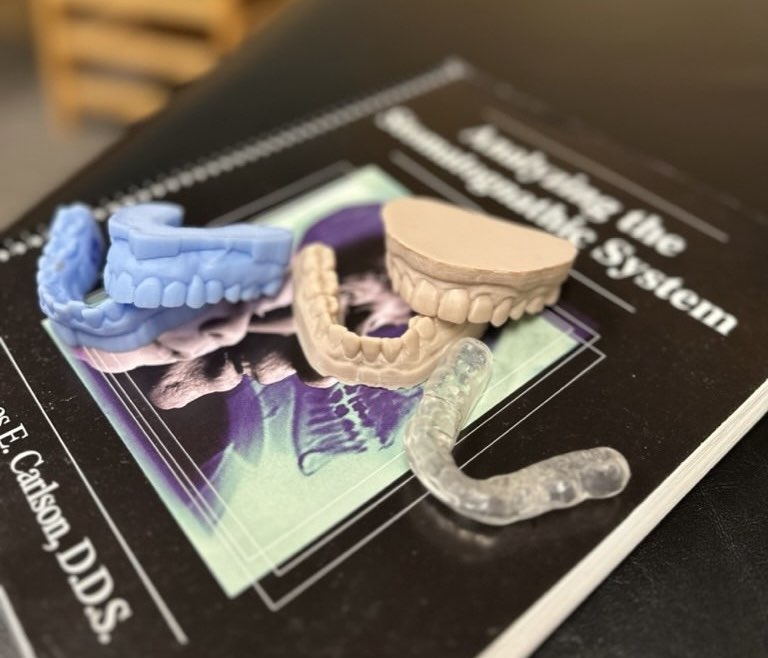
Visual Perception Exercises
Dominant movement patterns don’t only apply to our legs or arms – they impact the entire system, especially vision. Our vision sends signals to our brain for balance, gait, posture, and proprioception. Making sure our vision is in line with our body orientation can help to solve a variety of movement issues people encounter.
Visual perception exercises and postural vision integration can help realign the body’s visual compensation strategies, helping to bring the entire system back into balance by evaluating peripheral vision, testing for eye dominance, and utilizing eye exercises as necessary. This is another area where PRI therapists will work closely with your optometrist to understand the entire picture, and work collaboratively for customized, patient-centered solutions.
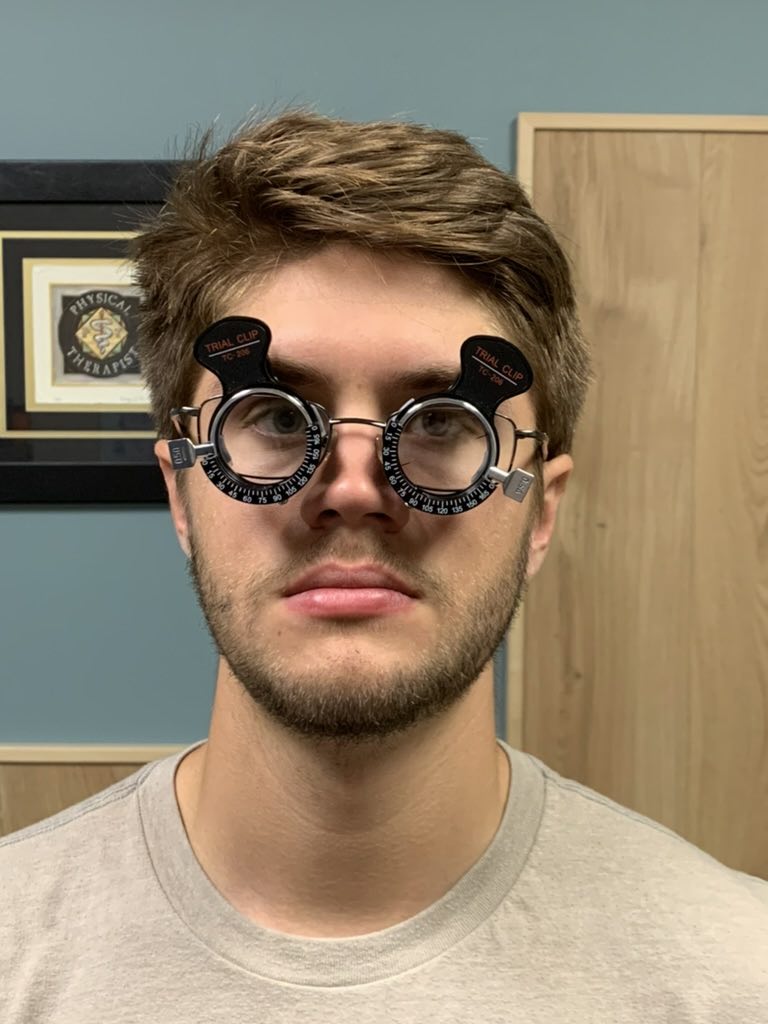
The Only Postural Restoration® Center in the State of Michigan
SIMIO Physical Therapy was established to provide a more holistic, patient-centered approach to physical therapy that generally isn’t found in traditional physical therapy practices. As Michigan’s first and only Certified Postural Restoration Center™, SIMIO is uniquely positioned to provide customized care that respects both the patient and the therapist.
Led by experienced industry professionals, SIMIO is committed to results-oriented wellness, which is why initial consultations are free. Founded by Craig E. Stasio PT, MSPT, PRC™ and Rick Paulin in 2008, SIMIO has been working with patients to achieve measurable, personalized results for over 15 years. A licensed physical therapist since 2004 and Postural Restoration Certified™ since 2019, Craig continues ongoing education in the field, and uses his skills to support the community and promote movement wellness in a variety of fields from running to crossfit.
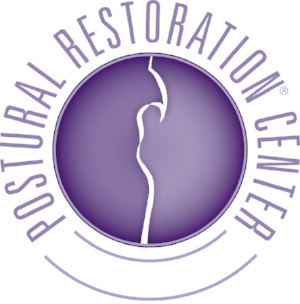
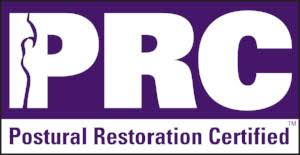
Interested in Postural Restoration® Physical Therapy?
Click below to call us or schedule your initial consultation.
Testimonials
- After being told I would need surgery for my knee pain, a friend urged me to see if SIMIO could help. I'm so glad I did! Not only did they stop the pain, they also addressed what was causing the pain so it wouldn't come back. And the best part; I didn't need surgery! (more…)
Carissa B.
- I have been going to SIMIO for several years and have always been impressed with their knowledge and very satisfied with the results.
Dave D.
- I'd actually give them a 10 if I could. This is a great team. [They are] great at explaining the whys and his plan on how to get to where your body needs to be. The only PT group I'll ever go to!!!!
Amy H.
- Simio was able to address the root of my problem instead of sticking a bandaid on the symptom, like a different physical therapist's office did. I've since been back for different issues, and definitely recommend them. Staff is friendly, make you feel comfortable, and definitely know what they are doing. Five stars!
Mady B.
- Craig and the SIMIO Health & Wellness team are top notch. Craig is knowledgeable and goes the extra mile on patient care. Getting my physical therapy care at SIMIO Health and Wellness is one of the best decisions I've made and highly recommend working with Craig and the team at SIMIO Health & Wellness.
Molly M.
- A while back I went to Simio for physical therapy. They gave me a first time evaluation at no charge. My therapist was Nate who really impressed me with his knowledge of the human body. I went in with a very sore elbow which really kept me from functioning in my job. After my assessment Nate determined that we would work in my pelvic allignment. (more…)
Curt D.
- Simio is a respectable company. They offer services for everyone. It is not your average physical therapy. They focus on the Wholeness of a body and being not just a symptom of something. I trust them with what my body needs when it comes to pain, movement, posture, and breathing.
Rebecca S.
- SIMIO Physical Therapy has been great to work with. I am feeling parts of my body function that have not before. It is amazing to feel these movements and to be able to feel more at ease when doing physical activity.
Kristin W.
In 2009 I first went to Simio for Craig's treatment based on testimony from a lady in my church. I was considering surgery after nearly 3 decades of chronic pain due to injuries and repetitive physical work motion. This lady had back surgery gone wrong, with tears in her eyes she pleaded with me to see Craig before surgery. (more…)
Mark J.
- As a local Personal Trainer I have been fortunate to share a great business partnership with SIMIO Health & Wellness. We are able to work together to create the best care plan possible for my clients. I know my clients will enjoy a more impactful life, moving and feeling better, thanks to SIMIO Health & Wellness.
Ashley P.
- Great experience at Simio. I had a sciatica issue when running and needed help relieving the pain. Craig identified an alignment issue and we went to work. I'm feeling much better and appreciate Craig's insight. He ended up fixing other related issues that I had for years, but didn't know how to fix. Thanks!
B. R.
- Kelly is an outstanding therapist that looks at the WHOLE body to treat my ailments. I highly HIGHLY recommend Simio! Top notch therapy and wellness knowledge & treatments.
Jamie P.
- I had a GREAT experience here. Craig was helpful with teaching me stretches and exercises that I could do at home to really help with my pain from Running outside. I highly recommend!!!
Robin M.
- Simio has changed my life! I went in with a chronic achilles pain which kept me from doing much of what I enjoy doing. After working with Kelly, I left with no pain at all and I have even started running again! Halfway through my healing, my 17 year old son went in as well. (more…)
Kendra L.
- Nate Dykema from SIMIO Health and Wellness is a miracle worker. I have seen Nate for 2 different accidents/problems and both times he was able to quickly pinpoint the problem and correct it! (more…)
Mark K.
I have experienced urinary urgency, incontinence, and frequency for most of my adult life. I had expressed this concern to doctors multiple times over those years. The answer from the doctors was always "you had three big babies and this is what happens." And more recently I have been told "this is part of the aging process." (more…)
Judy
- Craig has been helpful to three of our family members now. He was great at explaining what he was testing for, what the findings were, and why he was having us do the exercises he prescribed. Physical therapy at Simeo was very insightful and helpful.
Joanne V.
- I highly recommend Harvey Swanson for massage Therapy at Simio. Harvey is very skilled, knowledgeable, and compassionate. I feel SO much better and am grateful for Harvey's care!
Kris P.
- Wow!! Talk about magic touch , staff did a great job and Craig is AWSOME !
Mark P.
- Edith is an amazing deep tissue massage therapist and I highly recommend seeing her for your massage needs. She was extremely helpful in answer questions, making me feel comfortable and offered stretches and pressure points to do and try at home.
Ron M.
- Twice in the last several years I have had reason to see a PT at Simio. They are quite good at their craft. While the results were what I was looking for, the explanations of what was going on with my body was what I was most impressed with.
Ted S.
- The approach used by my PT Craig at Simeo is effective and life changing. Craig's knowledgeably conveys the intricacies of how the body and breath work in synchronicity so that my body can heal from the effects of stress and lifelong habits that have not served my body. (more…)
Arda R.
- I am very thankful I gave Simio a go. The staff is very friendly and caring. Craig was very thorough and got to the root of my problem. Within just a few visits, I was already feeling a difference. I am now pain free!
Lisa Z.
- SIMIO has been a wonderful experience for our family. We are on the third family member who has required their services over the last serveral years and have had great experiences. All the staff has been great to work with. They are very knowledgeable, professional and polite. I would highly recommend. Thanks and keep up the good work.
Andra M.
I initially went in for help with a hamstring injury from combat sports. After my first session I had complete confidence in the knowledge and professionalism of the staff. Nate (my therapist) explained everything in scientific, physiological terms with no BS. (more…)
Andrew J.
I've had pain in the past when going for longer runs and have always wondered what options I had to address it. I met Craig Stasio at a Gazelle's shoe store where they offer clinician's help in looking at your movement. He is very knowledgeable and really took a different approach at looking at my issues than others in the past. (more…)
Thun C.
- Craig and team were very helpful when I had some back pain issues. Craig has great knowledge along with ability to explain in layman's terms. I trust him and would highly recommend Simio if you are dealing with pain issues.
Harold V.
- I am so thankful for Craig and the rest of the staff at SIMIO! I am currently a pre-physical therapy student and did a portion of my observation hours there. Each of the therapists did a wonderful job explaining new concepts to me in an easy to understand manner. (more…)
Anastasia T.
- Over the years, I have had various things come up physically - back pain, shoulder pain, mobility issues - and each time I always chose to have a referral to SIMIO because their approach has been so helpful AND effective!! Nathan Dykema has been very patient and thorough at our sessions, and I always end up being able to get back to being active without pain!
Kelly S.
- The physical therapists are very knowledgeable and super helpful. They always have your best interests in mind.
Jill E.
- All physical therapists are not created equally. Craig not only devised a plan to get me back, but he got to the root cause that landed me in his office in the first place. He put a home routine in place to keep me on the right path and has me walking tall again.
Frank F.
- I would highly recommend Nathan at Simio. I had shoulder pain that lasted weeks and was affecting my work and general activity level.I felt better after the first visit. Nathan is continuing to teach me exercises that will help me avoid and/or alleviate this pain in the future. (more…)
Sue E.
- Super friendly staff. Broad range of Wellness programs for all.
Dan K.
- Craig is a very knowledgeable therapist that can answer questions and explain the physiology of what is going on in language that can be understood by lay people. The entire staff is accommodating and professional. I would highly recommend this group to anyone needing therapy.
Mary H.
- Excellent professionals and I highly recommend Simio for any of their services. Professional, knowledgeable and very friendly staff eager to offer up their knowledge and help.
Ron M.
- Never had anyone understand my back problems like Craig. They have an awesome and caring staff. They really know what they are doing after 15 years of dealing with different offices I will never go to another one.
Bones FMJ
- Because I have some severe spinal injuries I have had a lot of physical therapy over the years. But once I worked with Craig Stasio at Simio PT I never wanted to go anywhere else. Not only did I find Craig to be highly professional I also found him to be so knowledgeable re my spine that he improved my life in many areas. (more…)
Susan K.
- Extremely knowledgeable and kind staff. Several friends, family members and I have all benefitted from SIMIO Physical Therapists' help. Their approach is unique and they will definitely help you get back to feeling your best. Highly recommend!!
Jennifer K.
I've gone to a few different PT places over the years. Simio is the first place that figured out why I had the problem instead of just treating the symptoms. I have recommended Simio to many of friends and they all have been happy with the treatment they have received.
Sandra P.
Craig is a miracle worker! He is so knowledgeable and goes above and beyond to help me! Over the past 16 years I have been dealing with chronic pain and more so in the last 3-4 years. After going to many doctors, chiropractors, massage therapists, an acupuncturist, and a biochemist, I was diagnosed with Fibromyalgia through an Osteopathic Manipulative doctor 4 years ago. He suggested people sometimes help their pain by eliminating trigger foods. (more…)
Missy B.
- Nate was wonderful! He tailored his approach to my specific goals and availability. I have been blown away by the progress I am seeing in such short amount of time. I am further along now than I thought would even be possible. I strongly recommend them to anyone in need of physical therapy.
Caleb T.
- The perfect blend of knowledge, professionalism, compassion and care from Kelly (PT) at my first appointment. I walked out feeling confident that I would be able to walk my daughter down the isle pain free!
Scott C.
Postural Restoration® (PRI) FAQs
Is Postural Restoration effective?
Postural restoration physical therapy can be effective to relieve a variety of sources of pain and discomfort, from back and neck pain to joint inflammation and chronic fatigue. Evidence demonstrates that these techniques can be especially effective at treating chronic pain as well as back and neck pain.
Is PRI evidence-based?
Postural restoration therapies rely on science-backed and evidence-based data. The evidence used to support postural restoration includes both research studies and clinical experience. For example, multiple studies have found that postural restoration physical therapy can be effective in reducing pain and improving function in patients with conditions like neck and low back pain.
Clinical experience also demonstrates postural restoration physical therapy’s effectiveness at improving posture and reducing the risk of injury, making it an important tool in the treatment of a variety of musculoskeletal issues.
What is the “Zone of Apposition”?
The Zone of Apposition in postural restoration refers to the measured region of the respiratory diaphragm that aligns with the ribcage in the trunk to support posture and optimize respiratory function. Other “Zones of Apposition” exist all over the body as domes that optimize pressure regulation to support posture and movement for the body’s overall position, joint alignment, and muscle balance. When used properly, Zones of Apposition can be used to help PRI physical therapists facilitate improved posture and restore functional alternating movement.
What are the Left & Right AIC Patterns?
The Left & Right AIC Patterns are polyarticular (crossing multiple joints) muscle chains that influence how movement occurs in the body, particularly rotation, flexion, and balance.
These patterns explore how the muscles in the front of the body on both sides (the Anterior Interior Chain, or AIC) and the muscles in the back of the body on both sides (the posterior exterior chain) work together in alternation (front of the left/back of the right alternates with front of the right/back of the left). These patterns, and the common asymmetries that can accompany them, are used by postural restoration physical therapists to diagnose issues and help correct postural imbalances that can lead to dysfunction and pain.
What is a PEC Pattern?
The Posterior Exterior Chain, or Bilateral PEC Pattern, is a system of muscles composed primarily of those in the back on both sides at the same time. A PEC pattern of compensation strategies can often result in an anterior pelvic tilt, as muscles in the back are overused, pushing the hips forward. Like Left and Right AIC patterns, PEC Patterns can be identified by a PRI-certified physical therapist, and retraining therapies can be used to help bring balance back into the back’s system of balance, flexion, and rotation.
What is the Right TMCC Pattern?
The Right TMCC pattern, or Temporomandibular Cervical Chain, is a specific pattern of movement often found in patients with headaches, jaw discomfort, and chronic neck and upper back pain.
Compensatory strategies used by the Right TMCC pattern can lead to increased pain and dysfunction in these areas, which can manifest as problems like chronic headaches, migraines, TMJ, lockjaw, limited or painful neck rotation and range of motion, among others.